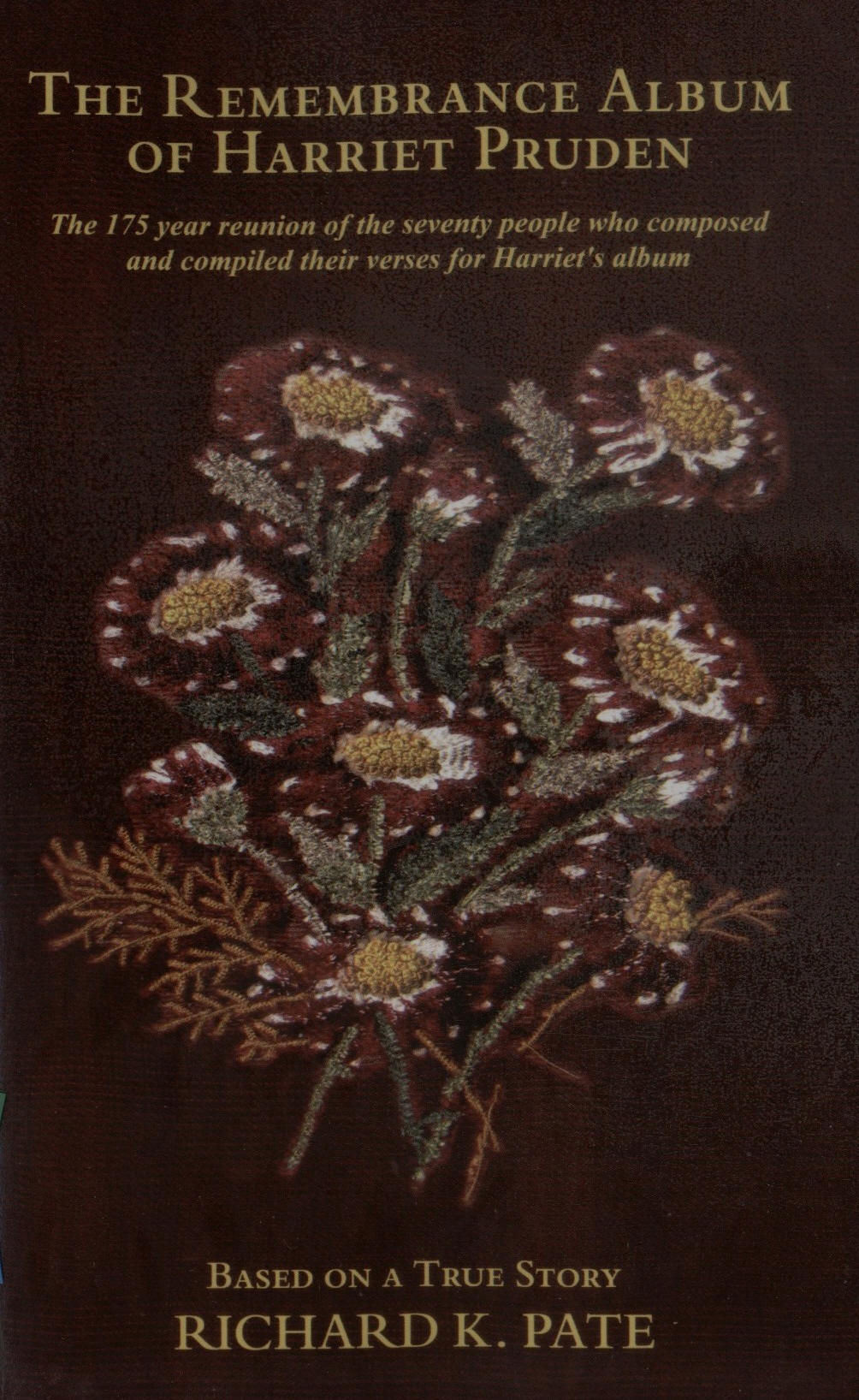Start a Commonplace Book
GUIDELINES TO START AND KEEP AN ALBUM LIKE HARRIET'S
The poems on these pages show how one can use an easy-to-learn format to create something quite amazing. Regular, ordinary folks created this beautiful and charming document; a document full of meaning in the Light family.
And what family would not want a similar document? Who wouldn’t want a hundred years of family history chronicled in poetry? The contributors to Harriet's album teach the power of even academically undistinguished poems to chronicle and reveal, when one sees what a beautiful portrait had been painted of her in the words of not just one person but of many people. This portrait is as clear as any photograph and twice as revealing. Of all the historical documents reviewed researching this work nothing was more personally revealing than the poems themselves.
This technique can work for anyone. Poetically-challenged people can do this and gifted poets should also. All one needs is passion and a muse like Harriet.
Thanks to these poetic poltergeists, we today can follow their guidelines and create an album for our own families, one that may be passed down and cherished by generations to come. Along the way is the added benefit of also passing down an appreciation for poetry in general by having a body of work built into your family with deep meaning and significance.
Perhaps Harriet's album is not so much a book as it is a quilt, not of fabric but of words, stitched together by seventy people over eighty years. Each poem is a single square of the quilt. Begin the stitching for your own poetic family quilt, then, set it off upon its own journey through life.
1. Start the album as a group of close friends and family. Beginning the work as a group, in and of itself is very poignant, moreover it will set the standard of the book. Future contributors are more likely to adhere to those standards when they see how well it was begun. The purpose of the album need not be a poetic intervention, as was the case with Harriet's, it could just as easily be created purely in celebration. Adapt it to your unique conditions.
2. The group writes original poems or finds a poem by another. Either way the poems are for, about and dedicated to whoever will be the recipient of the album. Whether original or borrowed your poem should be a message from you to the album recipient so themes like remembrance, forget-me-not, friendship, hopes and dreams are very appropriate as well as apothegms (see below).
3. The poems or entries are to be handwritten in the album by each person in ink, having been completed and checked for completeness in advance. The finished work should be as mistake-free as possible so the album is also pleasing to see. Renaissance commonplace books often had a master-reader to lead the group so you may want to find a local, talented wordsmith to help out, as AG Brown helped Harriet's friends. The handwritten part is important also for the benefit of future readers or users of your album. You can tell much about someone from their handwriting. Harriet's album, with it's seventy contributor's many styles of writing, has the feel of a rich and varied tapestry. The printed word is efficient but the handwritten word is intimate and revealing.
4. Limit your journalistic entries! The only journalistic part of your entry should be signing, dating and saying where the poem was written (which is important, it will greatly aid future generations to figure out the story behind the poems and where the album might have ventured in its life). Good quotes, sayings and lyrics should be the main contributions, other than poems if you want to achieve a feel, similar to Harriet’s, in your own album.
5. Time-honored truths or apothegms are also important. A commonplace book is traditionally a reference book, a single vessel which collects those many kernels of knowledge and wisdom, in the form of quotes, poems and sayings, which are important to us. Being time-honored, it is likely these truths will continue to have meaning for future generations. One of the things that kept Harriet's album active for so long was that the poets passed down their values and beliefs, not just random poems. Subsequent owners, like Martha Ann related to those very sentiments and values and it helped keep the book alive.
6. The owner or recipient of the album should, for the most part, let others fill the pages of the album. Harriet wrote only two poems in her album. The album should be an intimate, tangible reminder of friends and family over the years, a place to visit with them even if separated by great time or distance. Harriet's album was a tremendous comfort to her in tough times and there is no reason to believe it won't be the same with your album.
7. Pass the book down. Ensure that it continues to be used by involving your friends and family with it. Share it, use it, read the poems aloud. Encourage people to think about what piece they want to write in the album. Make them a part of it so they will be comfortable and familiar with it. If they are already involved, when the time comes to pass it on they will know what to do to keep the story going and, moreover, will have the desire to do so.
"Where ere you go, where ere you rove,
may happiness be your lot."









